In the neighborhood of Carabanchel , at the top of Cerro de las Ánimas (like the San Isidro Cemetery, from which it is separated by a wall), is the San Justo Cemetery. It was inaugurated in August 1847 under the design of the architect Wenceslao Gaviña y Vaquero , and since then it has housed an innumerable number of tombs of famous Spaniards: poets, writers, doctors, politicians, singers, actors, composers...
Also of anonymous people who flood its labyrinthine recesses of endless tombstones, statues, pantheons and mausoleums, turning it into an authentic open-air museum where you can get lost in search of the remains of an artist of our devotion, a loved one or for the simple pleasure of walking.
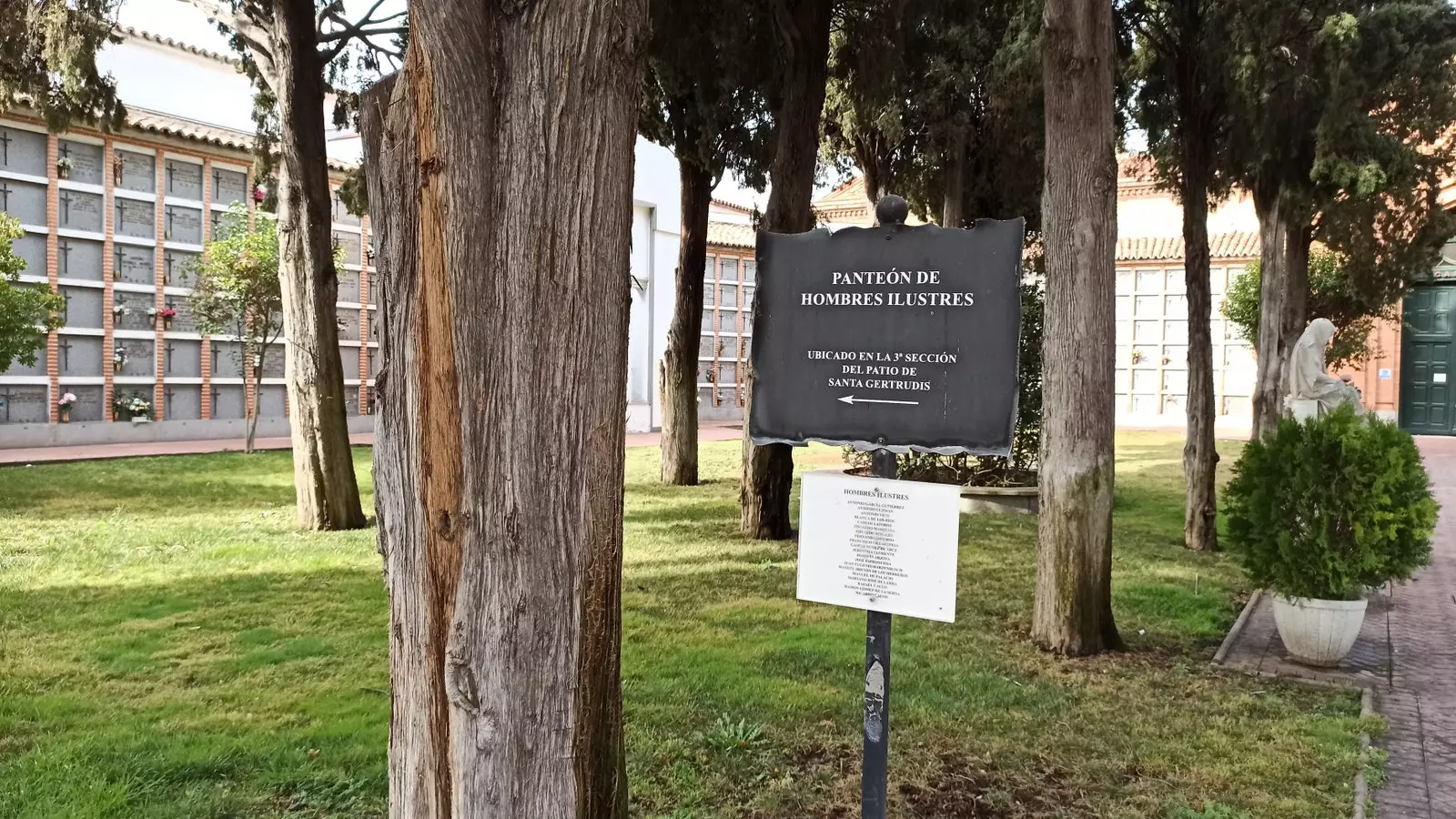
Pantheon of Illustrious Men
Extends between the Vía Carpetana and the Paseo de la Ermita del Santo, from which you can access through the main door (located at number 70). There are several ways to get there, from taking the 17 bus to getting off at the Puerta del Ángel or Marqués de Vadillo metro stops and going for a walk through Madrid Río. It opens every day from 8:00 a.m. to 3:00 p.m. and access is free and free.
Once inside, we will acquire a great view of Madrid as we climb the access slope and gain height. It is located just in front of the disappeared Vicente Calderón stadium, but we can still see other emblematic buildings such as the Almudena Cathedral or the skyscrapers of Plaza de España.
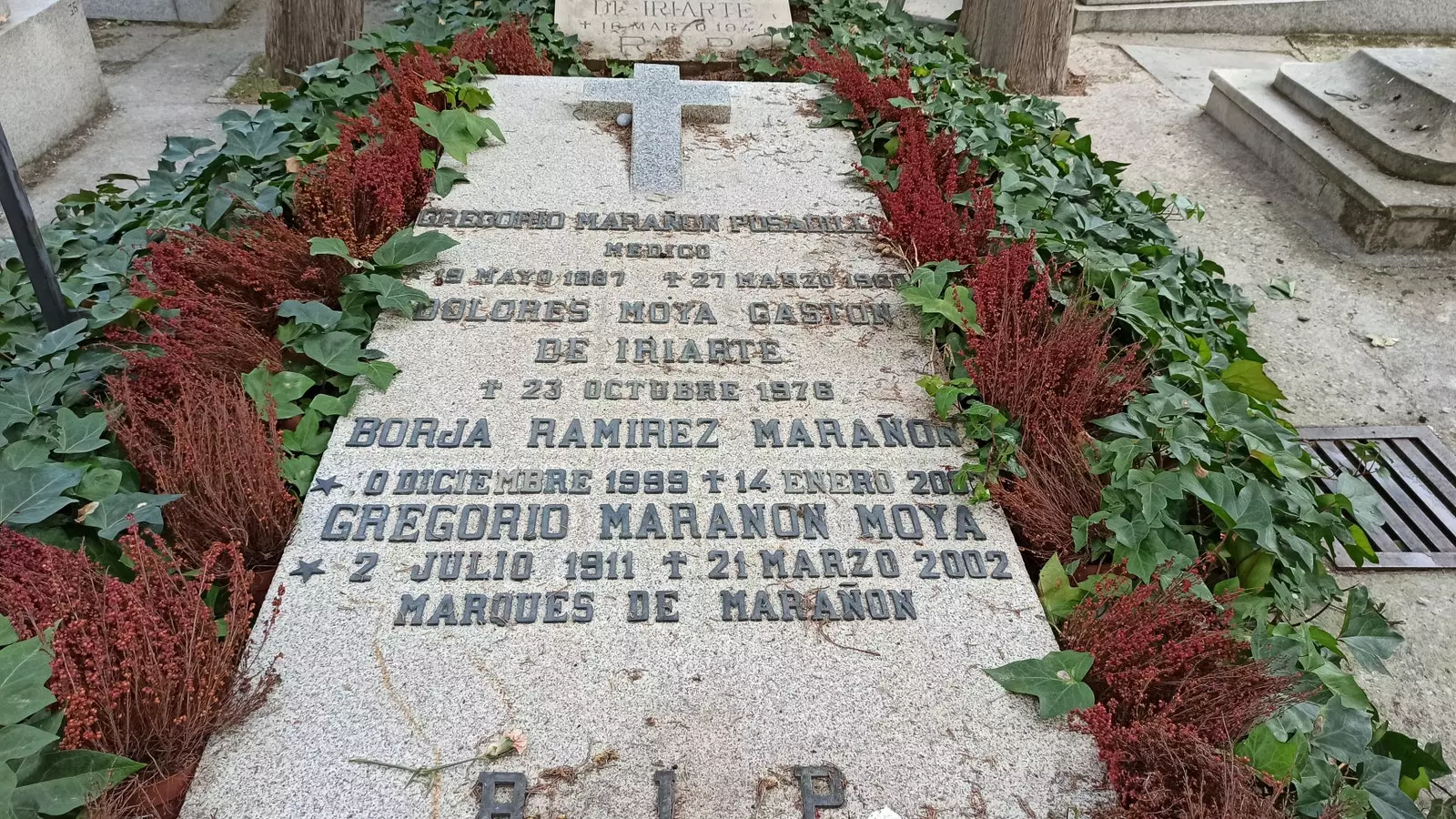
Tomb in the San Justo Cemetery.
On the left we will already have some of the nine courtyards into which the cemetery is divided. Starting with San José and San Pedro (where the bailaora Pastora Imperio lies), an underground patio that gives the sensation of being a garage. Las Ánimas follows, with the actors Erasmo Pascual and Rafaela Aparicio. And then Nuestra Señora del Socorro, divided into four, where architects such as Javier Barroso to pianists like Araceli Ancochea passing through the actor José Luis Ozores.
However, the most spectacular part is the right. If we continue straight ahead as we arrive there is the patio of Santísimo Sacramento, with the actress Sara Montiel, the musician Manuel Fernández Aparicio (keyboardist of Los Bravos) and the archaeologist Manuel Gómez Moreno. After passing through the office (where we can request a map) we arrive at the San Miguel patio, the first to be built and around which the others were built. It is a garden area with niches on both sides where the chapel is reached through a tree-lined corridor.
Here are the painters Carlos García Alcolea and Jenaro Pérez Villaamil, as well as the poet Juan Nicasio Gallego. Also Manuel Cullel (the first buried in the cemetery), sacristan of San Millán who managed to survive the executions of May 2, 1808. Inside the chapel, in addition to a good number of tombs, we will see a high altar dedicated to Saint Michael, which previously belonged to the Franciscan convent of Los Angeles.
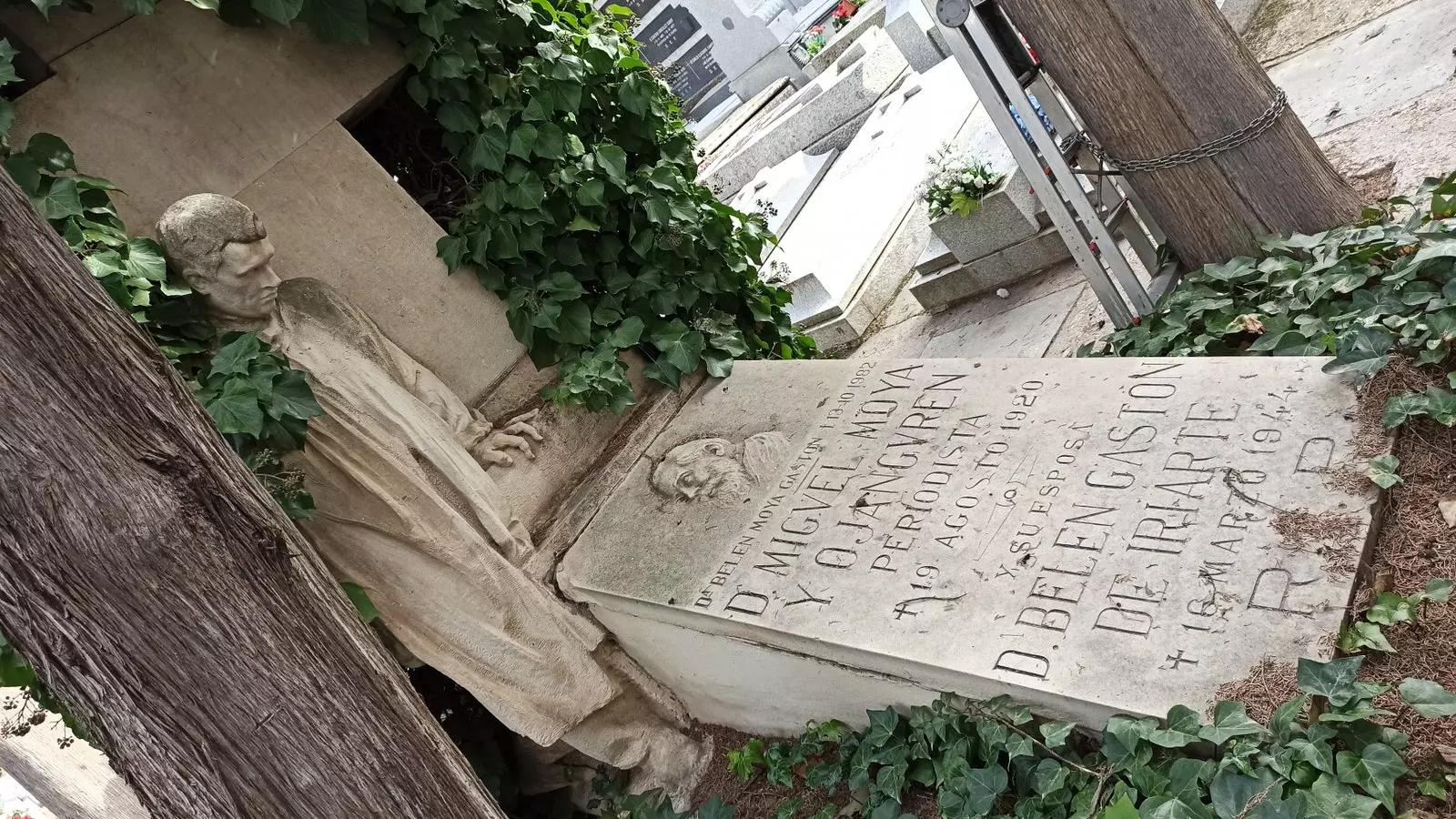
Tomb of the journalist and politician D. Miguel Moya, in the San Justo Cemetery.
As we go back out to the San Miguel patio, on the left we access the Santa Cruz patio. At its door we are greeted by the tomb of the doctor Gregorio Marañón, at ground level and surrounded by vegetation. Just behind, next to a standing male statue, is that of the journalist and politician Miguel Moya. It is no coincidence that they are together, and it is that, by marrying his daughter Dolores, Marañón became Moya's son-in-law. Also in that courtyard are the playwright Alfonso Paso, the painter Francisco Pradilla and the historian and art critic Valentín Calderera.
From here you can also access the patio of Santa Catalina, with the painter Casto Plasencia and the Cuban writer Calixto Bernal. Melchor Rodríguez was also buried here in 1972 (niche nº 58, row 3), an anarchist who came to save the lives of thousands of right-wing people during the Spanish Civil War, which earned him the nickname "The Red Angel".
It was the only funeral in which it was allowed to place a red and black anarchist flag on the coffin during the Franco dictatorship, bringing together numerous people from both sides, some singing To the barricades and others praying an Our Father.
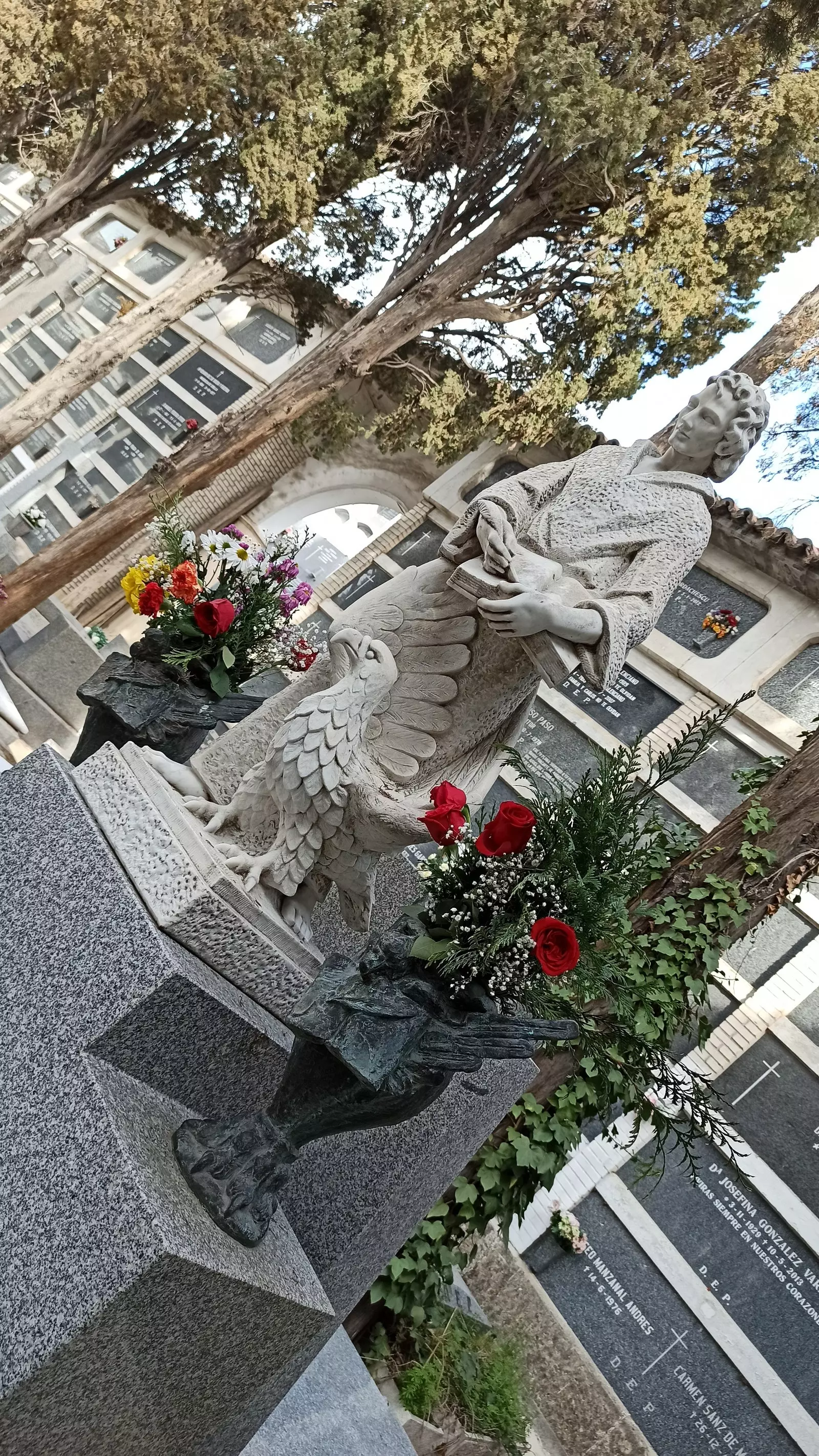
Flowers in San Justo Cemetery.
Retracing our steps, on the other side of San Miguel, we arrive at the rectangular courtyard of San Justo, where tombs such as that of the poet Amador López Ayala stand out for their height and decoration. (with a bust of his head inside a temple on which an angel stands) or that of the military man and writer Francisco Villamartín (with a pedestal from which the main statue seems to be missing). Among the cypresses in this courtyard also rest the sculptor Agustín Querol, the theater critic Alfredo Marquerie, the painter Antonio Mª Esquivel or the Balaca painter brothers.
We continue through the courtyard of San Millán, equally notable for its statues, mausoleums and pavilions. Are here the singers Manolo Tena and Manuel Sanz Torroba, the sculptor Sabino Medina, the architect Antonio López Aguado, the landscaper Carlos Haes, the generals Cassola, Ros de Olano and Bazaine, the novelist and poet Manuel Fernández González, the publisher Agustín Sáez de Jubera, the composer Baltasar Saldoni, the politicians Benito Gutiérrez and Francisco de Ríos Rosas, the count of Puñoenrostro, the playwright José Campo Arana, the flamenco singer Porrina de Badajoz, the journalist Julián de Reoyo and the pedagogue Manuel Carderera.
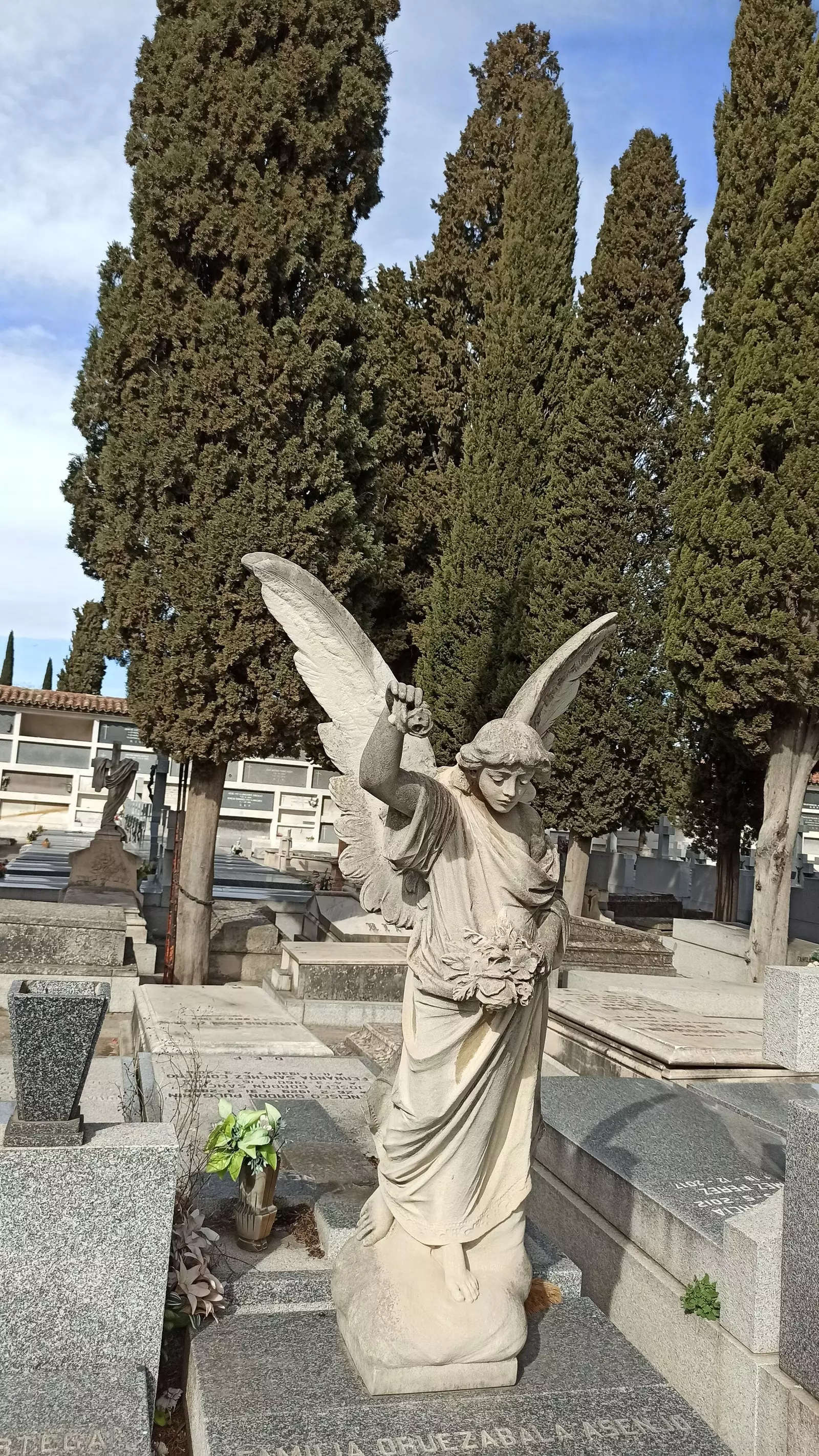
Saint Just Cemetery.
From there we pass to S Santa Gertrudis, an elongated courtyard divided into five sections that adjoins Vía Carpetana. You enter through the 2nd section, where the poets José Zorrilla and Juan Pascual Arrieta, the singer Jorge Ronconi, the painter Eduardo Chicharro and the soldier Manuel Pavía lie.
By some stairs to your left hand we arrive at the 3rd section, possibly the most spectacular of all. In addition to its precious mausoleums, here is the Pantheon of Illustrious Men created by the Association of Writers and Artists in 1902 (and which should not be confused with the one in the vicinity of Atocha).
Semicircular in shape, it was designed by Enrique María Repullés y Vargas, and the first to occupy it were the poet José de Espronceda, the writer Mariano José de Larra and the painter Eduardo Rosales. The three of them, together with the writer Gaspar Núñez de Arce, have their own stone portrait on their tomb.
Later, more prominent personalities were added, mainly actors. (Antonio Vico, Antonio Guzmán, Carlos Latorre, Fernando Ossorio, Jeronima Llorente, Joaquín Arjona, Rafael Calvo) and writers (Antonio García Gutiérrez, Blanca de los Ríos, Edward Markina, Francisco Villaespesa, Juan Eugenio Hartzenbusch, Manuel Bretón de los Herreros, Manuel de Palacio, Ramón Gómez de la Serna). In the rest of the patio there are also illustrious personalities, with graves as noteworthy as that of the poet Ramon de Campoamor.
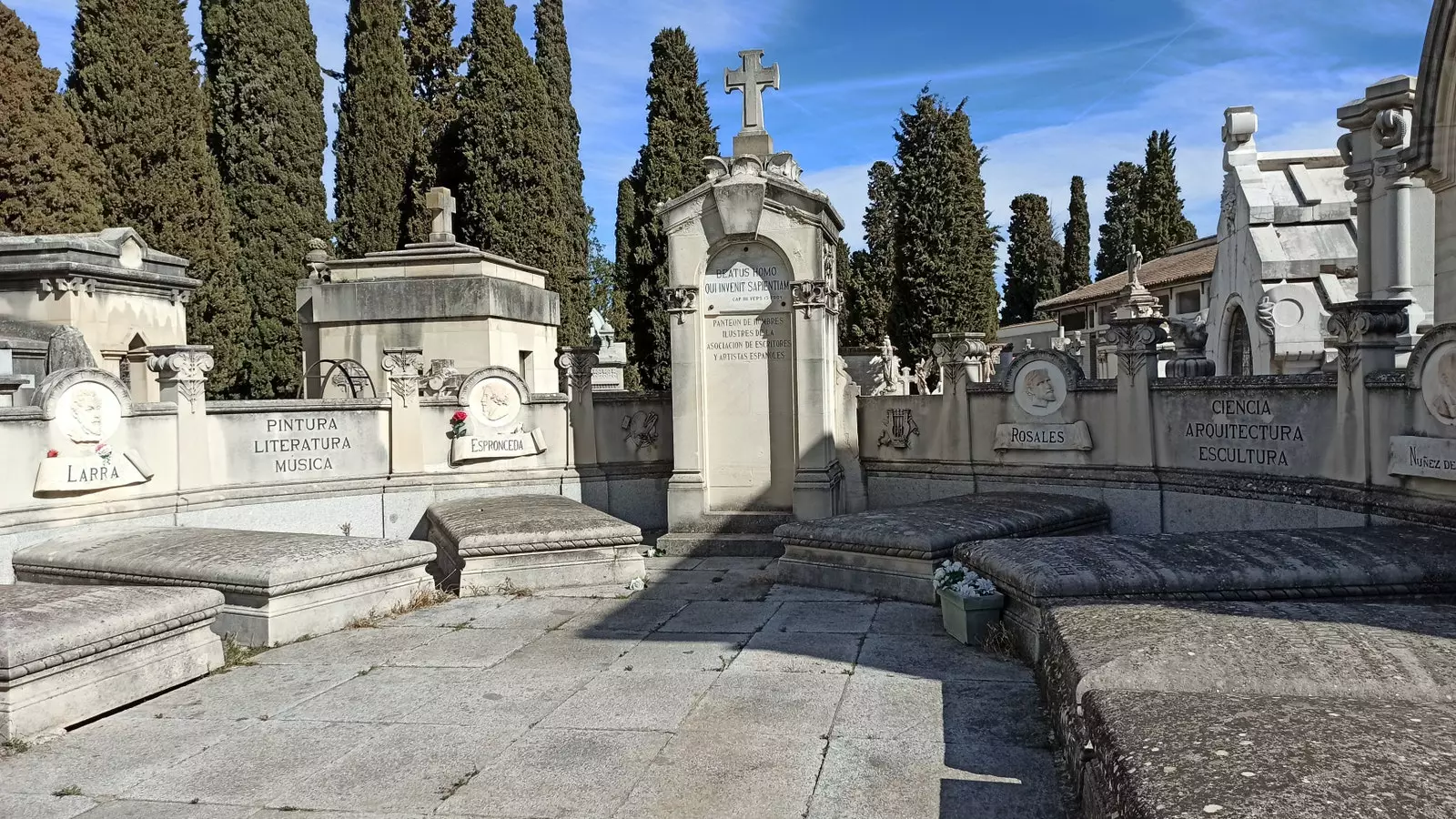
Illustrious in the San Justo Cemetery.
We reach the end of the cemetery to look at the 4th section, where the composers Federico Chueca and Ruperto Chapí lie, the historian Antonio Pirala, the soprano Lucrecia Arana and the playwright Manuel Tamayo. Then we return on our feet, continuing in a straight line parallel to Vía Carpetana to finish seeing the labyrinthine nooks and crannies of Santa Gertrudis.
In the 1st section, the journalist Antolin Garcia , the writer Pedro Antonio Alarcon , the doctor Peter Kills and the military Manuel Diez Alegria . In the lower section, the composer Federico Moreno-Torroba . Finding all these names is not a task for a single day, so we say goodbye with the promise of returning shortly to continue our search.
